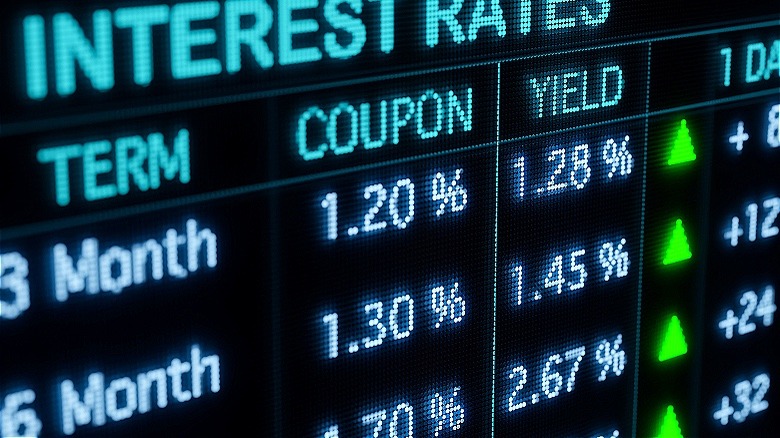The Wealthy Use High Interest And High Inflation To Their Advantage (& You Can Too)
There are some immutable truths about money that aren't often noticed by the typical consumer. For one thing, common habits among the world's wealthiest people often see them shy away from taking on large debts, as they know the cost of debt is the price of using tomorrow's money today. Wealthy individuals also tend to find themselves in a position that is better suited to leveraging high-interest rates that cripple others. For them, cash is king in many instances; however, when the economy starts to retract, wealthy investors often find that their cash assets are able to expand buying power in the market and in other opportunities.
This said, the discrepancy between such high-net worth individuals and the rest of us common folk doesn't have to be so distinct. Speaking with Lawrence Sprung, CFP founder of Mitlin Financial and author of "Financial Planning Made Personal," we dug into the tools wealthy individuals use to their advantage, especially during periods of high inflation. Sprung noted that times of economic struggle come and go, but their effects aren't something to be simply shrugged off, saying, "Feeling squeezed between high interest rates and high inflation is definitely a problem." But there's hope for us all yet. Said Sprung, "There are simple steps you can take that many people have overlooked since interest rates have gone up."
Stagnant capital can and should be leveraged elsewhere
Lawrence Sprung's most pressing advice here centers on mobilizing stagnant capital. He notes that rising interest rates affect both the amount you'll pay on borrowed money, and on the return you can find in a savings account (under the right conditions). People have become "so used to earning close to nothing on their assets in the bank, that even after interest rates rose, they have left those funds in the same place they have been for the last 10 plus years," he said, adding that, "These institutions are making a killing because many of them have not raised the yield to the depositor and they are now lending those funds out at much higher rates."
Fortunately, Sprung's advice is quite simple. He advised, "I would highly suggest, especially for those with significant balances in the bank, to explore high-yield savings account options, which can command a yield in the 4.5% to 5%-plus range. The monies you have in the bank that are earning below 1% that you do not need immediate access to can be better served in a high-yield account. This won't cover all the extra costs from higher interest rates, but it will definitely help."
Moving money that you have sitting in an account and waiting for a purpose (for instance, your emergency savings fund) can give it an interim utility that begins to offset the negative pressure of rising credit card rates or mortgage costs.
Investing during a bear market can yield long-term upside
Decreasing financial mobility as a result of ramped-up pressure offers additional pathways toward improved long-term outlook, too. Depending on a range of marketplace conditions, bond yields may rise, stock market values might plummet, and physical assets like real estate or gold bullion could become uniquely positioned for a future bull run. (Speaking of which, see our guide to investing in gold.)
There are plenty of reasons why stock market assets fluctuate; however, turmoil as a result of real estate pressures, war or political conflict, and much more can signal a looming period of volatility. When price volatility increases, wealthy investors begin to gobble up assets. A money tip you can steal from Warren Buffett is when he famously said that "price is what you pay; value is what you get." Investors buying into a stock at its low point get the same thing (a single share) as an investor who purchased at a different time, but their pricing may be far lower — improving the value to the investor by a huge margin.
Back in early February 2020, the S&P 500 went from a high to dropping more than 1,000 points. However, all that devastation was reversed by August. Rather than selling off assets to stem the bleeding, wealthy investors know that rebounds have consistently proven to be the rule and bought while the market was temporarily undervalued. As an example, a share of Vanguard's S&P 500 ETF (NASDAQ: VOO) bought at its trough, around $210 in March 2020, would have earned its owner roughly $100 in growth by the August turnaround, while an investor who waited for a return of market stability or sold during the turmoil would have missed out.


